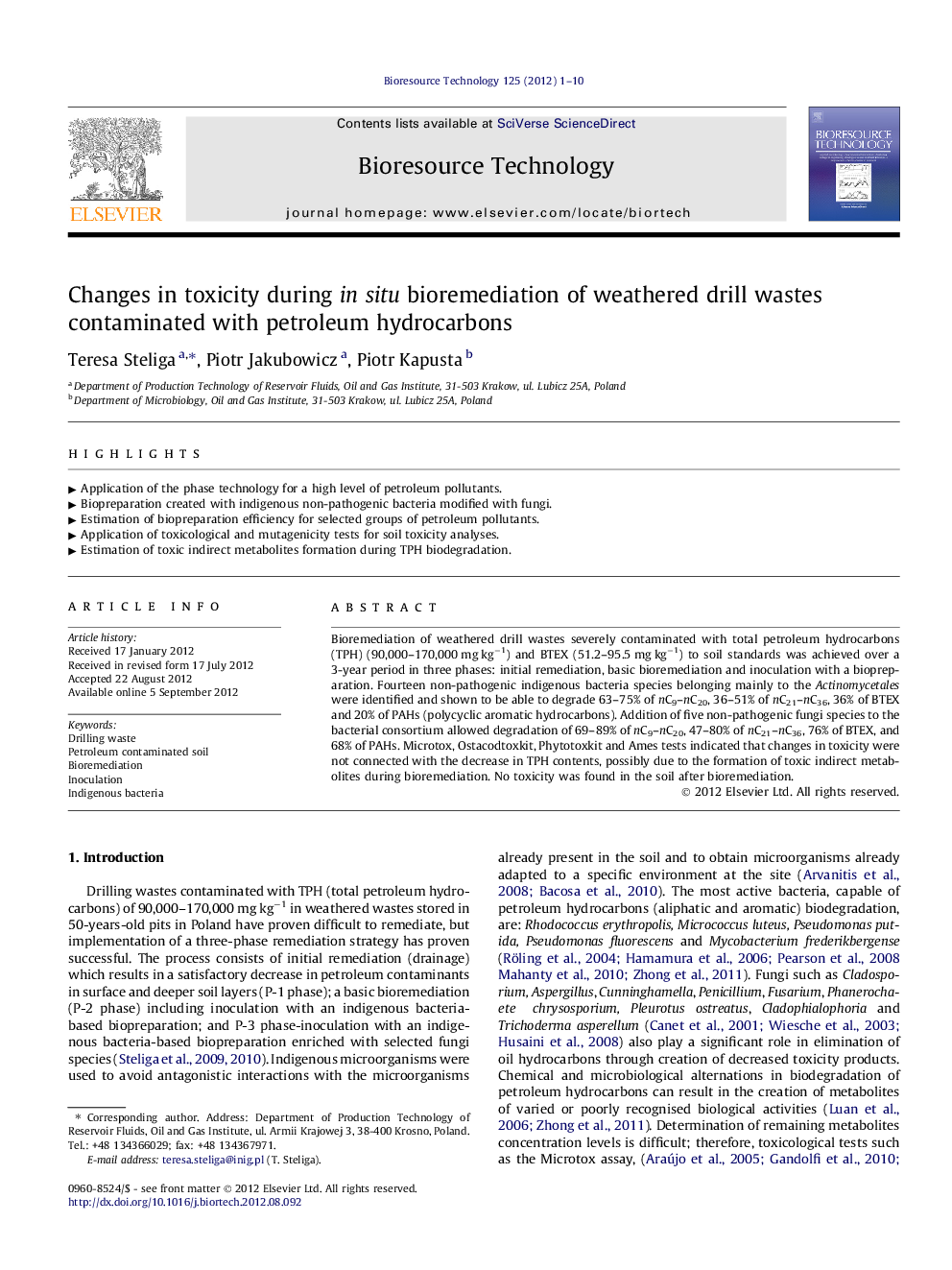| کد مقاله | کد نشریه | سال انتشار | مقاله انگلیسی | نسخه تمام متن |
|---|---|---|---|---|
| 681309 | 1460018 | 2012 | 10 صفحه PDF | دانلود رایگان |

Bioremediation of weathered drill wastes severely contaminated with total petroleum hydrocarbons (TPH) (90,000–170,000 mg kg−1) and BTEX (51.2–95.5 mg kg−1) to soil standards was achieved over a 3-year period in three phases: initial remediation, basic bioremediation and inoculation with a biopreparation. Fourteen non-pathogenic indigenous bacteria species belonging mainly to the Actinomycetales were identified and shown to be able to degrade 63–75% of nC9–nC20, 36–51% of nC21–nC36, 36% of BTEX and 20% of PAHs (polycyclic aromatic hydrocarbons). Addition of five non-pathogenic fungi species to the bacterial consortium allowed degradation of 69–89% of nC9–nC20, 47–80% of nC21–nC36, 76% of BTEX, and 68% of PAHs. Microtox, Ostacodtoxkit, Phytotoxkit and Ames tests indicated that changes in toxicity were not connected with the decrease in TPH contents, possibly due to the formation of toxic indirect metabolites during bioremediation. No toxicity was found in the soil after bioremediation.
► Application of the phase technology for a high level of petroleum pollutants.
► Biopreparation created with indigenous non-pathogenic bacteria modified with fungi.
► Estimation of biopreparation efficiency for selected groups of petroleum pollutants.
► Application of toxicological and mutagenicity tests for soil toxicity analyses.
► Estimation of toxic indirect metabolites formation during TPH biodegradation.
Journal: Bioresource Technology - Volume 125, December 2012, Pages 1–10